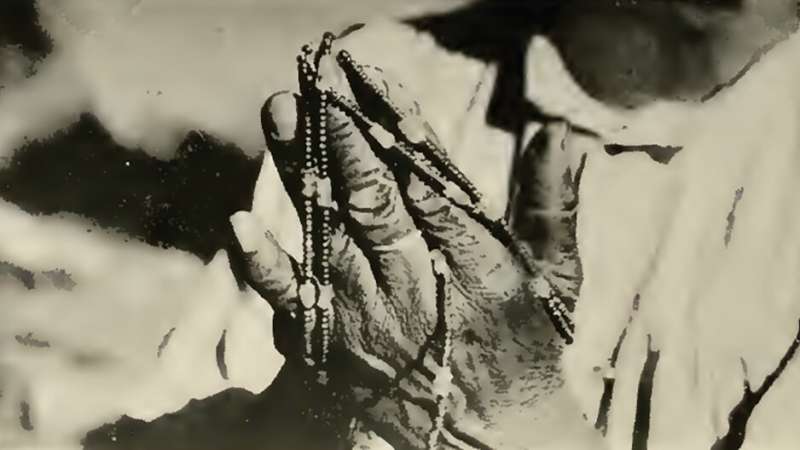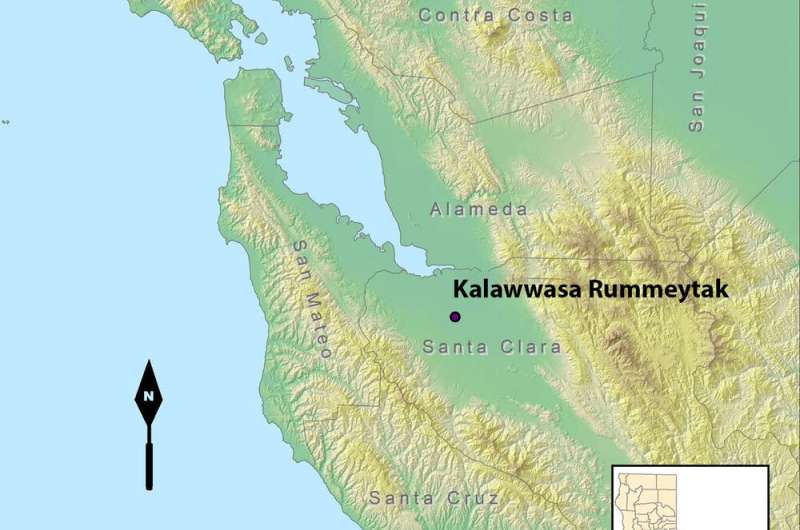This article has been reviewed according to Science X's editorial process and policies. Editors have highlighted the following attributes while ensuring the content's credibility:
fact-checked
trusted source
proofread
In ancient California matrilocal society, daughters breastfed longer and women accumulated greater wealth

In a new study, researchers and members of the Muwekma Ohlone Tribe of the San Francisco Bay Area are the first to publish evidence of wealth-driven patterns in maternal investment among ancient populations.
Ancestors of the Muwekma Ohlone living 2,000 years ago at Kalawwasa Rummeytak in present-day Silicon Valley in California's San Francisco Bay Area, placed high value on women's economic contributions to their communities, according to the study published in The American Journal of Biological Anthropology.
Women stayed in the villages in which they were born, and their male partners moved from their birth communities to join their wives' families. Women's intimate knowledge of the local ecology and female ownership of important food resources appears to have incentivized parents to invest more in their female offspring by breastfeeding them longer. It may have also led to female-biased wealth disparities, as older women at the site were buried with much greater wealth than men.
"Ohlone ancestors living at Kalawwasa Rummeytak relied heavily on women's contributions to the economy, so they structured their marriage and family systems around women to keep them in their natal communities," said Dr. Alexandra Greenwald, anthropologist at the University of Utah and curator of ethnography at the Natural History Museum of Utah.
"We can also see that placing a high value on women's contributions led to greater investment in their well-being as children and created greater opportunities for them to accumulate wealth and prestige over their lifetimes."
Over the past four decades, the Muwekma Ohlone tribal leadership has had oversight over many of the tribe's ancestral heritage sites within their ethnohistoric home of the San Francisco Bay Area. The Muwekma Ohlone Language Committee has renamed many of the tribe's cemetery, village sites and sacred places to counter the colonial legacies and politics of erasure perpetrated by the Spanish Empire, and the ensuing American conquest of California. In 2001, the tribe's language committee renamed a cemetery site located in the City of Santa Clara where the tribe and San Jose State University staff and students recovered 24 ancestral remains. The site's name, Kalawwasa Rummeytak, means Place of the Calabazas Creek Site.
"Given the fact that there was no funding for analysis or reburial, our team produced a preliminary report on the excavation and skeletal analysis," said Muwekma Ohlone Tribal Vice-Chairwoman Monica V. Arellano and co-author of the study. "The Muwekma Ohlone Tribal Council voted to support the proposed research that has become the current published study."
The authors of the study, led by Greenwald, used Strontium isotopes to assess Ohlone ancestors' movement across the landscape throughout their lives. Strontium is incorporated into a person's tissues from the water they drink, which bears the local geological signature. By sampling from tissues like bone and teeth that grow at specific points in an individual's life, archaeologists can track the person's movement. The analysis revealed that the group practiced a matrilocal kinship system where men marry and move into their wife's village.
In other societies that follow a matrilocal kinship system, mothers invest more resources into their daughters who remain in their community and contribute to the local economy. To test whether Kalawwasa Rummeytak mothers prioritized their female offspring, the authors were interested in examining how they breastfed their children. Because lactation is costly to mothers from a caloric and time perspective, scientists considered weaning age an important measure of parental investment among mammals.

To reconstruct the infant and childhood diets of Kalawwasa Rummeytak residents, the authors measured carbon and nitrogen isotope ratios contained in permanent first molars. First molars begin forming at birth and grow in layers, akin to tree rings. These layers incorporate isotopic signatures from the food that the infant is consuming, and can be tied directly to the age of the individual when the layer was formed.
"Infants who are breastfeeding exhibit greater nitrogen enrichment because they're consuming breastmilk, which is synthesized from their mother's bodily tissues," Greenwald explained. "Using this method, we could track down to the month how long each individual at Kalawwasa Rummeytak was breastfed."
On average, the women interred at the site were breastfed five months longer than the males, suggesting that parents prioritized their female offspring's nutrition. On average, girls were weaned at 36 months, and boys at 31 months. When comparing the average weaning age of individuals who were born at the site, and those who moved there in early adulthood, the authors found a significant difference. Locals were breastfed an average of 42 months versus 32.5 months for non-locals.
Not only were women at Kalawwasa Rummeytak breastfed longer as girls, but they also held a disproportionate amount of wealth. Prior to contact with the Spanish and Euromericans, Indigenous Californians developed a form of money using shell beads. Individuals buried with large quantities of beads are assumed by archaeologists to have achieved greater wealth and status in their lifetime. At Kalawwasa Rummeytak, only older women are interred with shell beads.
"This case stands out as the most definitive example in ancient California of burial wealth concentrated among women," said co-author Gregory Burns of the University of Utah, an expert in the shell bead economy.
The findings highlight the flexibility human societies to shift their kinship strategies in response to local ecological conditions.
"Our tribal leadership is honored to have worked and co-authored with these scholars and hopefully such analyses will leave our tribal membership, Native Americans and the scientific community a meaningful legacy that contributes to the understanding of our ancestral lifeways and adaptive strategies left by our ancestors," said Vice Chairwoman Arellano.
More information: Alexandra M. Greenwald et al, Sex‐biased parental investment and female wealth accumulation in ancient California, American Journal of Biological Anthropology (2023). DOI: 10.1002/ajpa.24806
Provided by University of Utah

















